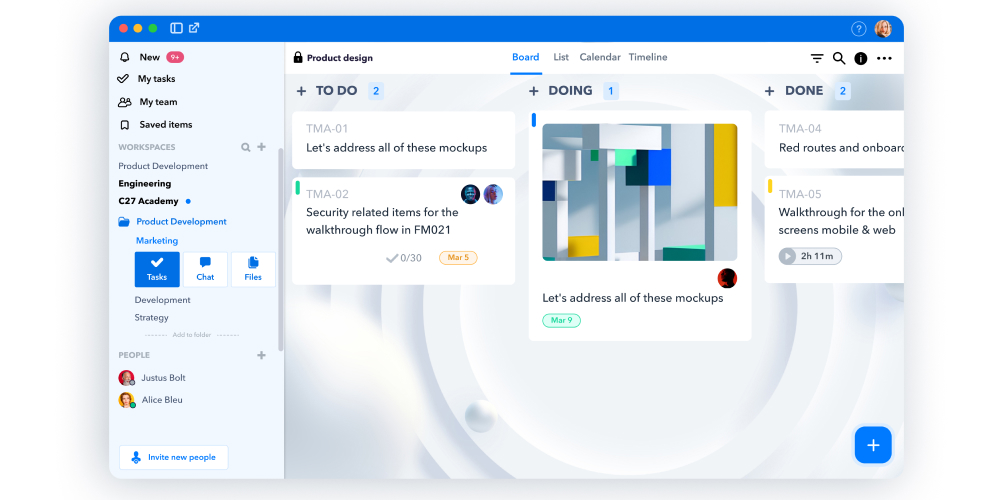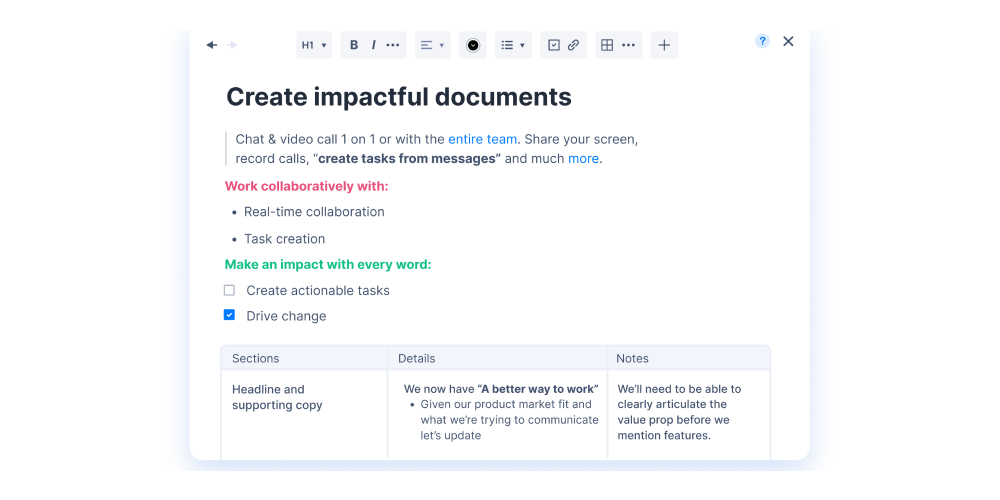Agile methodologies, with their emphasis on flexibility, incremental delivery, and continuous improvement, are increasingly popular in project management. Integrating Agile methodologies into Heycollab can transform the way teams manage sprints, backlogs, and conduct retrospectives. Heycollab’s suite of features offers a seamless platform for applying Agile principles, enhancing project visibility, and fostering collaboration. This article explores how specific features of Heycollab can be leveraged to integrate Agile methodologies effectively.
1. Managing Sprints with Heycollab’s Task and Project Management Features

Simplify your sprint planning with Heycollab’s visual task boards, easily categorizing to-dos, in-progress items, and completed tasks.
Heycollab’s task management capabilities are a cornerstone for managing Agile sprints. The platform allows for the creation of tasks and subtasks, making it easy to break down sprint items into manageable pieces. Custom fields and labels can be utilized to assign story points or priority levels, offering a clear overview of sprint commitments. The “My Work” section centralizes tasks assigned to each team member, ensuring transparency and accountability throughout the sprint.
Sprint Planning with Custom Boards and Templates
Heycollab’s customizable boards and templates serve as the foundation for effective sprint planning. Teams can create sprint boards that reflect their unique workflow, using columns to represent stages such as “To Do,” “In Progress,” and “Done”. This visual representation helps in organizing sprint tasks, making it clear what needs to be achieved within the sprint timeframe.
Task Breakdown and Assignment
Within these boards, tasks can be detailed with descriptions, deadlines, and custom fields to specify priorities and estimates, such as story points. This granularity aids in breaking down larger user stories into manageable tasks, ensuring that each team member knows exactly what they need to work on. The “My Work” section further streamlines this process by giving each team member a personalized view of their assigned tasks, enhancing focus and productivity.
Real-Time Collaboration and Updates
The real-time chat and video calling features of Heycollab facilitate continuous communication among team members throughout the sprint. This ensures that any impediments or changes can be addressed promptly, keeping the sprint on track. Moreover, the platform’s integrated file sharing and collaborative docs feature allow for seamless exchange of ideas and feedback, critical for adapting to evolving project needs.
2. Backlog Management with Flexible Workspaces
A well-maintained product backlog is crucial for Agile teams. Heycollab’s customizable workspaces offer the flexibility needed to manage backlogs efficiently. Teams can create dedicated backlog boards, categorizing items using custom fields and labels to indicate status, such as “Ready for Development” or “In Review”. The ability to save and sort items ensures that the backlog remains organized and prioritized according to the team’s needs.
Customizable Boards for Backlog Items
Heycollab’s board templates and customizable views enable teams to create a visual representation of their product backlog. Teams can categorize backlog items using columns such as “New,” “In Progress,” “Testing,” and “Done,” or any other workflow that suits their project’s needs. This organizational flexibility ensures that the backlog remains structured and navigable, regardless of its size or complexity.
Prioritization with Custom Fields and Labels
Effective backlog management requires constant prioritization to ensure that the most valuable tasks are addressed first. Heycollab allows teams to utilize custom fields and labels to mark backlog items according to their priority level, complexity, or any other criteria relevant to the project. This feature helps in making informed decisions about which backlog items to move into the next sprint, based on their importance and the team’s capacity.
Dynamic Updating and Refinement
As projects evolve, so do their backlogs. Heycollab’s real-time collaboration tools enable team members to add, remove, or update backlog items as new information comes to light or project priorities shift. The platform’s intuitive interface makes it easy for teams to keep their backlogs up-to-date, ensuring that they always reflect the current state of the project and its requirements.
3. Conducting Retrospectives with Collaborative Docs and Communication Tools

Enhance your team’s collaboration with Heycollab’s real-time document editing tools, perfect for crafting impactful user stories and sprint goals.
Retrospectives are key to continuous improvement in Agile. Heycollab’s collaborative documents feature enables teams to create shared retrospective notes where team members can contribute insights and feedback in real time. The chat and video calling features further support retrospective meetings by allowing remote teams to discuss outcomes and action items effectively, ensuring no insight is lost.
4. Continuous Improvement with Time Tracking and Reporting
Heycollab’s time tracking and reporting features support the Agile commitment to continuous improvement. Teams can analyze time spent on tasks and projects, identifying areas for efficiency gains. This data is crucial for refining future sprint planning and workload distribution, ensuring teams become more effective over time.
5. Integrating Agile Templates for Streamlined WorkflowsHeycollab offers custom board templates, which can be tailored to fit Agile workflows such as Scrum or Kanban. These templates can standardize the process of sprint planning, backlog refinement, and retrospectives, saving time and ensuring consistency across Agile ceremonies.
Integrating Agile methodologies into Heycollab not only streamlines project management processes but also enhances team collaboration and project visibility. By leveraging Heycollab’s task management, customizable workspaces, collaborative tools, and reporting features, teams can apply Agile principles more effectively, leading to improved project outcomes and team performance. With Heycollab, Agile teams have everything they need to manage sprints, backlogs, and retrospectives in a unified platform, making it easier to adapt, innovate, and deliver value continuously.

